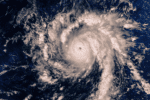More home fires happen during the winter months than at any other time of the year. Heating, holiday decorations, winter storms, and candles all contribute to the increased risk of fire. As temperatures drop and people spend more time indoors, it is important to keep fire safety in mind. Read on for tips from the National Fire Protection Association (NFPA) and the U.S. Fire Administration to help reduce winter fire risks and share with your clients’ tenants.
Winter Holiday Fires
As fun and festive as it may be to decorate for the holidays, candles and lights can be fire hazards. According to the NFPA, more than half of the home decoration fires in December are started by candles, with Christmas Day, New Year’s Day, and New Year’s Eve as the top three days for home candle fires. They suggest that candles are kept at least 12 inches away from anything that burns and is never left unattended. While Christmas tree fires are less common, they are dangerous, nonetheless. Make sure trees are at least three feet away from heat sources — fireplaces, space heaters, radiators, candles, etc. As soon as Christmas trees are dry, get rid of them.
Home Heating Fires
After cooking, heating is the second leading cause of home fires. Half of all home heating fires occur in December, January, and February, with January as the peak month. Property owners should keep anything that can burn at least three feet from any heat source like fireplaces, wood stoves, radiators, or space heaters. Likewise, only one heat-producing appliance should be plugged into an electric outlet at a time. When heating homes, the concern of carbon monoxide arises. Over 400 people a year die unintentionally from this colorless, odorless, poisonous gas. Carbon monoxide alarms should be installed and regularly tested.
In the event of a winter storm, keep portable generators outside, away from windows, and as far from the home as possible. If using a wood stove or a fireplace, have the chimney cleaned out and inspected each year by a professional.
Electrical Fires
Approximately 45,000 home electrical fires occur each year. November through months are the peak months for electrical fire deaths, and fires typically peak between midnight and 8 a.m. The NFPA suggests the following tips for avoiding electrical fires: plug only one heat-producing appliance (like a microwave or space heater) directly into a wall outlet at a time; never use an extension cord with a heat-producing appliance; extension cords should only be used temporarily, as wall outlets are safer.
While fire-safe behavior is no doubt crucial, accidents happen. Even when property owners and managers follow all precautionary steps, the risk of fire remains. Coupling fire prevention with a strong insurance policy is the optimal solution, as it reduces the risk of accidents while ensuring that property owners are covered in the event of a disaster.





